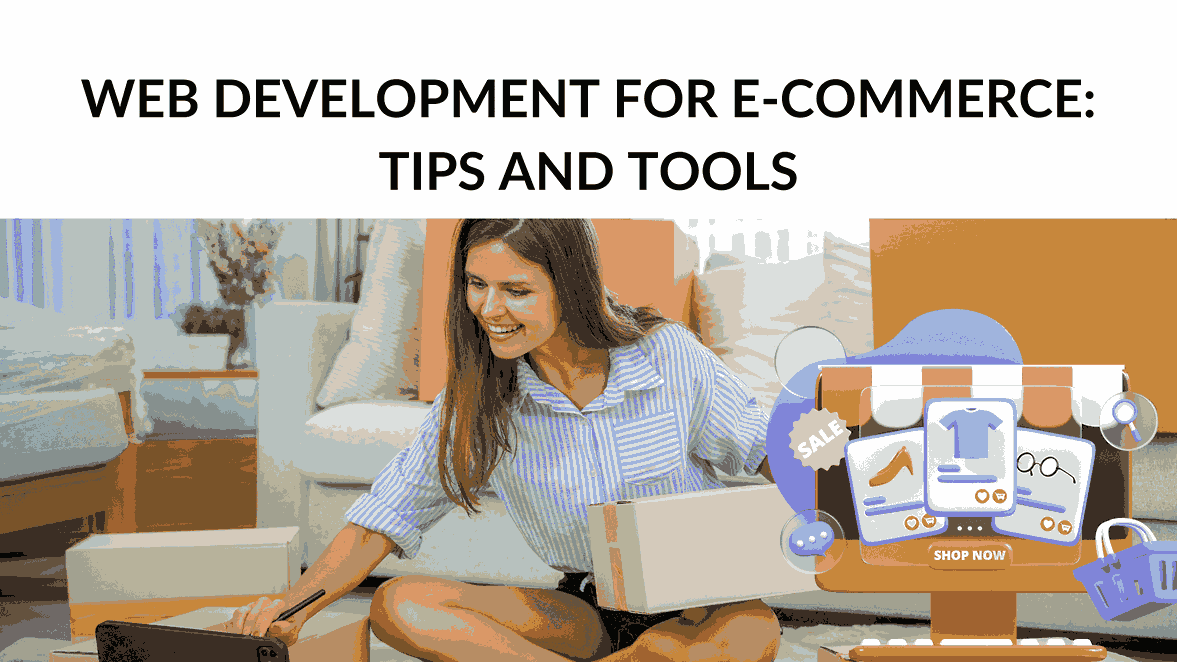Web Development for E-commerce: Tips and Tools
- WebOps Platforms Bug Tracking & Feedback Software Web Development & Design


With an estimated 12 million to 24 million active ecommerce sites around the world, it’s easy for an online store to get lost in the crowd. The key to standing out? Top-notch website development that gives customers the experience they need.
Ecommerce website development is the process of developing the technical aspects of your ecommerce website—how it functions, accepts payments, behaves in response to user action, and appears aesthetically. Valued at $11 billion in 2022, the web development services industry opens the door for business owners to launch user-friendly websites and solve their most pressing ecommerce challenges, which could include:
- Determining the right features and functionality for your ecommerce project.
- Understanding which ecommerce framework might work best for you.
- Integrating ecommerce into a current website or website template.
In this article, we’ll talk about what ecommerce web development is, how you can find a developer or team of developers to help you realize your vision, and the steps to take before launch. Let’s dive in.
Options for Building an Ecommerce Website
When it comes to building out your ecommerce store, you’ll likely come across three options:
1. Build your website from scratch (aka open source): If you already have a web development or IT team in place, going the open-source route may be your best bet. Open-source ecommerce platforms are solutions in which you can modify all aspects of the code, meaning you can build your website from scratch with few to no customization limits. However, keep in mind that using an open-source solution often means your business is responsible for things like PCI compliance, web hosting, security issues, manual patches, and updates.
2. Customize a SaaS (software-as-a-service) solution: Don’t have the coding expertise or budget to build a solution from scratch? SaaS ecommerce is a subscription-based solution that is built and maintained by a third-party vendor. SaaS allows you to rent the platform, while the platform provider takes care of tasks such as product updates, security, hosting, PCI compliance, and more.
3. Harness the power of MACH architecture: MACH (Microservices, API-First, Cloud-Native, and Headless) is a set of guiding principles using a best-of-breed approach to build enterprise software tech stacks. Unlike monolithic architecture, MACH allows you to choose the technology that best meets your business needs and future roadmap.
How Do I Choose the Right Ecommerce Website Developer?
According to research from PWC, 73% of U.S. consumers say customer experience is an important factor when purchasing online, yet only 49% believe brands provide a good experience. The best way to ensure your ecommerce web development team provides a better user experience on your site is by hiring one with experience designing and/or developing for ecommerce. Consider factors like PCI compliance, SEO, multiple payment options, mobile-responsiveness, and more when making your choice.
Related Links: HubSpot Article, Shopify Article
Functionality To Consider When Developing An Ecommerce Website
Different features and functionality you may want in your ecommerce site will vary based on your business model and unique needs. Key elements to consider include:
- Responsive design: With mobile commerce on the rise, your website should support responsive, mobile-friendly web design.
- SEO capabilities: Ranking highly on search engines is crucial for driving traffic to your site.
Related Links: Mailchimp Resource, BrowserStack Guide
6 Steps For Developing a Custom Ecommerce Website
Before diving into the development process, consider the following steps:
- Understand your business goals: Define your goals and metrics for your ecommerce business.
- Understand the intended shopping experience: Tailor your site to your target audience’s shopping preferences.
- Discuss platform options: Choose the right ecommerce platform for your needs.
Related Link: BigCommerce Article
Launching an ecommerce business ranges in complexity, and so do the platforms available to you. Whether you start with a complex platform or a turn-key solution, you may find you need some extra web development help at some point in your business lifecycle. Now that you know about the web developer’s role in your ecommerce launch and maintenance process, the functionality you need to consider as you evaluate tech specs, and the steps you should take prior to launch, you’re ready to get started. If you need assistance, BigCommerce has a robust network of service and solution professionals at the ready to answer any questions.





